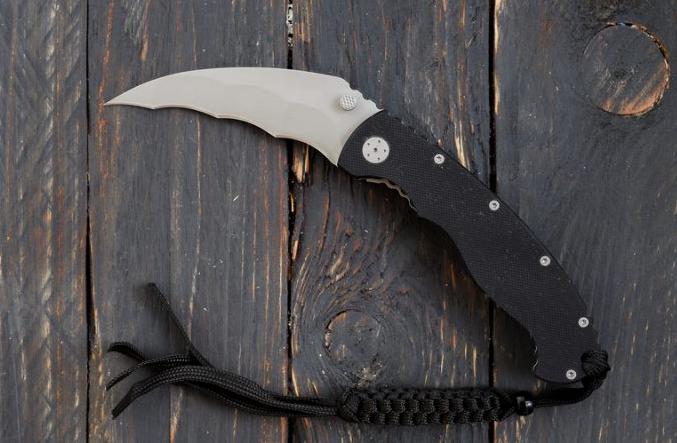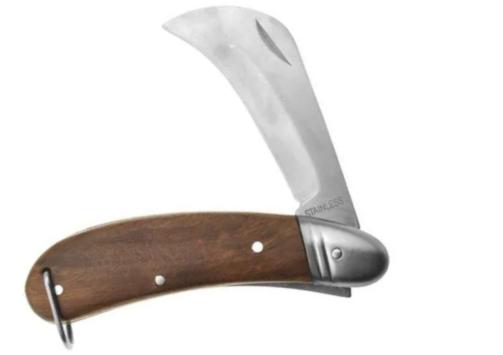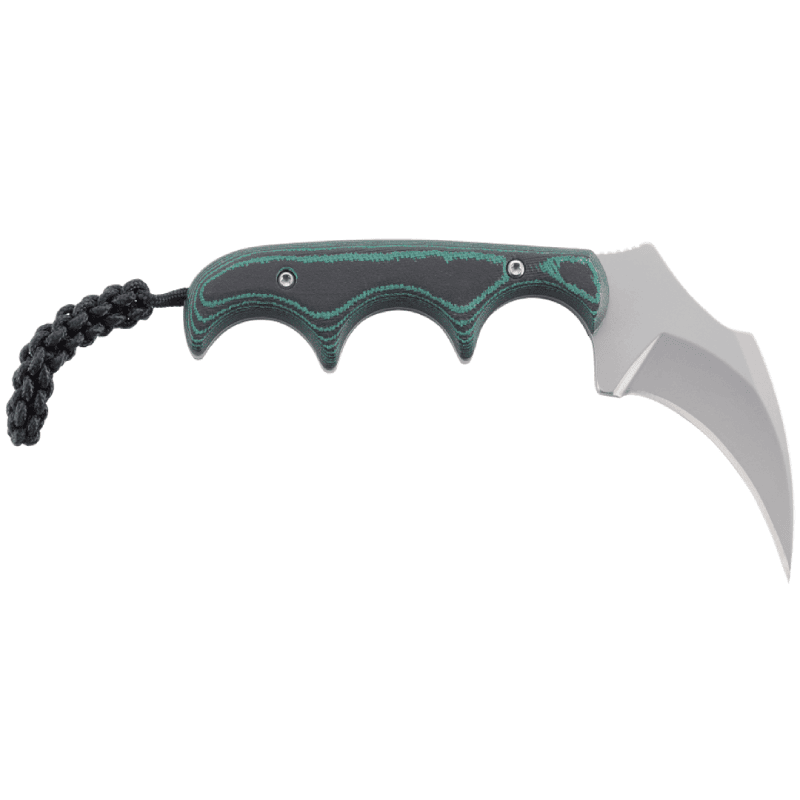Have you ever wondered why some knives seem to be designed for very specific tasks? Take, for example, the hawkbill blade. With its distinctive curved shape, it’s clear that this blade is meant for something special. But what exactly is a hawkbill blade, and how does it differ from other blade shapes?
In this article, we’ll delve into the world of hawkbill blades, exploring their origins, unique characteristics, and practical uses.
So, let’s get started.
What is a hawkbill blade shape?

A hawkbill blade is characterized by its distinctive concave curve, resembling a hawk’s beak. This curve can vary in degree, from a gentle arc to a more pronounced hook. The blade typically features a sharp point and a single cutting edge on the inside of the curve.
Origins of the hawkbill
The hawkbill blade has its roots in the 18th-century Age of Sail. Sailors used its distinctively curved shape to slice through thick ropes and canvas sails with ease.
During the 19th century Industrial Revolution, this hooked wonder transitioned to agricultural duties. Farmers found the hawkbill’s design to be the perfect sickle for precise pruning and harvesting crops.
Today, the hawkbill’s iconic look is a hit across many trades.
Start Working with a Professional Now
Advantages and Disadvantages of the Hawkbill Blade
Advantages and Disadvantages of the Hawkbill Blade
Like any tool, the hawkbill blade has its advantages and disadvantages. Here are some of the key points to consider:
Advantages:
- Precise Cuts: The curved edge excels at making clean, controlled cuts, particularly in situations where a straight blade might slip or cause damage.
- Reduced Slippage: The hooked shape of the blade “bites” into the material, minimizing slippage and ensuring safer, more accurate cuts.
- Pulling Cuts: The hawkbill design is optimized for pulling cuts, making it ideal for tasks like stripping wires or pruning branches where a drawing motion is more efficient and controlled.
- Enhanced Control: The curved shape allows for a secure grip and improved control during cutting tasks, reducing fatigue and increasing accuracy.
Disadvantages:
- Limited Versatility: While exceling in specific tasks, the hawkbill blade is not as versatile as other blade shapes like drop point or clip point blades, which can handle a wider range of cutting tasks.
- Difficulty in Sharpening: Due to their curved edge, hawkbill blades can be more challenging to sharpen compared to straight-edged blades.
- Not Ideal for Push Cuts: The hawkbill design is not well-suited for push cuts, as the curved edge can create resistance and hinder smooth cutting action.
What are the Uses of a Hawkbill knife?

A hawkbill knife is a versatile tool that’s perfect for various tasks. Here are some of its most common uses:
- Pruning and Trimming: The curved shape makes it ideal for pruning branches and trimming plants without damaging the stem.
- Wire Skinning: The blade’s hooked shape allows for easy removal of insulation from electrical wires.
- Carpet and Linoleum Installation: The precision cutting makes it useful for trimming and shaping carpets and linoleum during installation.
- Leatherworking: The curved edge is perfect for making intricate cuts and shaping leather pieces.
- Rescue Operations: Emergency responders use hawkbill blades with serrated edges to quickly and safely cut through seatbelts or clothing in rescue situations.
Comparing Hawkbill Blades with Other Blade Shapes

A hawkbill blade is often compared to other curved blades like the karambit and sheepfoot. While they share some similarities, the hawkbill blade’s unique shape and uses set it apart. Here’s a quick breakdown:
Hawkbill vs Karambit
Both have curved designs, but the karambit’s more pronounced curve and finger ring make it more specialized for self-defense and martial arts applications.
Hawkbill vs sheepsfoot
Both hawkbill and sheepsfoot knives can play a vital role in sailing and rescue situations.
The hawkbill’s sharp point can easily pierce through tangled ropes or sails to rescue others, and its curved blade is also more suitable for daily use on a boat.
In contrast, the sheepsfoot’s thick, blunt point is less likely to cause accidental harm to others or puncture the deck. Its straight blade can be safely braced against a flat surface to cut through ropes wrapped around a limb.
Hawkbill vs Wharncliffe
Both have sharp, piercing points, but the Wharncliffe‘s straight edge is better suited for tasks that involve pushing the blade forward, like whittling or slicing through materials in a straight line.
How to Sharpen a Hawkbill Blade
Sharpening a curved blade can be a bit tricky, but with the right tools and techniques, you can keep your hawkbill blade razor-sharp. Here’s a step-by-step guide:
1. Choose the right sharpening tool
Select a sharpening stone, ceramic rod, diamond sharpener, or specialized hawkbill sharpener that suits your experience level and the degree of curvature of your blade.
2. Sharpening technique
Hold the blade vertically and run the curved edge down the sharpening rod or cone from top to bottom. Maintain consistent contact with the curved edge, using a sharpening angle of 15-25 degrees. Sharpen one side until you raise a burr, then switch to the other side.
3. Progress to perfection
Progress through coarser to finer grits to achieve a razor-sharp edge. Finish by stropping the blade on a strop with a profiled edge to polish and remove any remaining burrs.
4. Alternative method
If you prefer a different approach, you can use adhesive-backed sandpaper on a soft backing. This will conform to the curved shape of your hawkbill blade, allowing for a more precise sharpening process.
Start Working with a Professional Now
Frequently Asked Questions
Can I use a hawkbill blade for self-defense?
While hawkbill blades are not specifically designed for self-defense, they can be used in emergency situations. However, it’s essential to note that hawkbill blades are primarily designed for utility and precision cutting tasks.
Can I use a hawkbill blade for heavy-duty cutting tasks?
While hawkbill blades are designed for precision cutting, they may not be suitable for heavy-duty cutting tasks. They are best suited for tasks that require finesse and control, rather than brute force
What are the advantages of a hawkbill blade compared to other blade shapes?
The hawkbill blade excels at making precise, controlled cuts and reduces slippage during use. Its curved shape is optimized for pulling cuts and enhances control during cutting tasks. However, it may be less versatile than other blade shapes like drop point or clip point blades.
Having hawkbill blade knives in your arsenal
As a leading supplier of controlled knives in China, Kegani offers wholesale, OEM, and private label services to help you bring your vision to life.
If you’re interested in sourcing high-quality hawkbill blade knives from China, request a free quote from us today! Our team of experts will work closely with you to ensure that your products meet your exact specifications and requirements.

